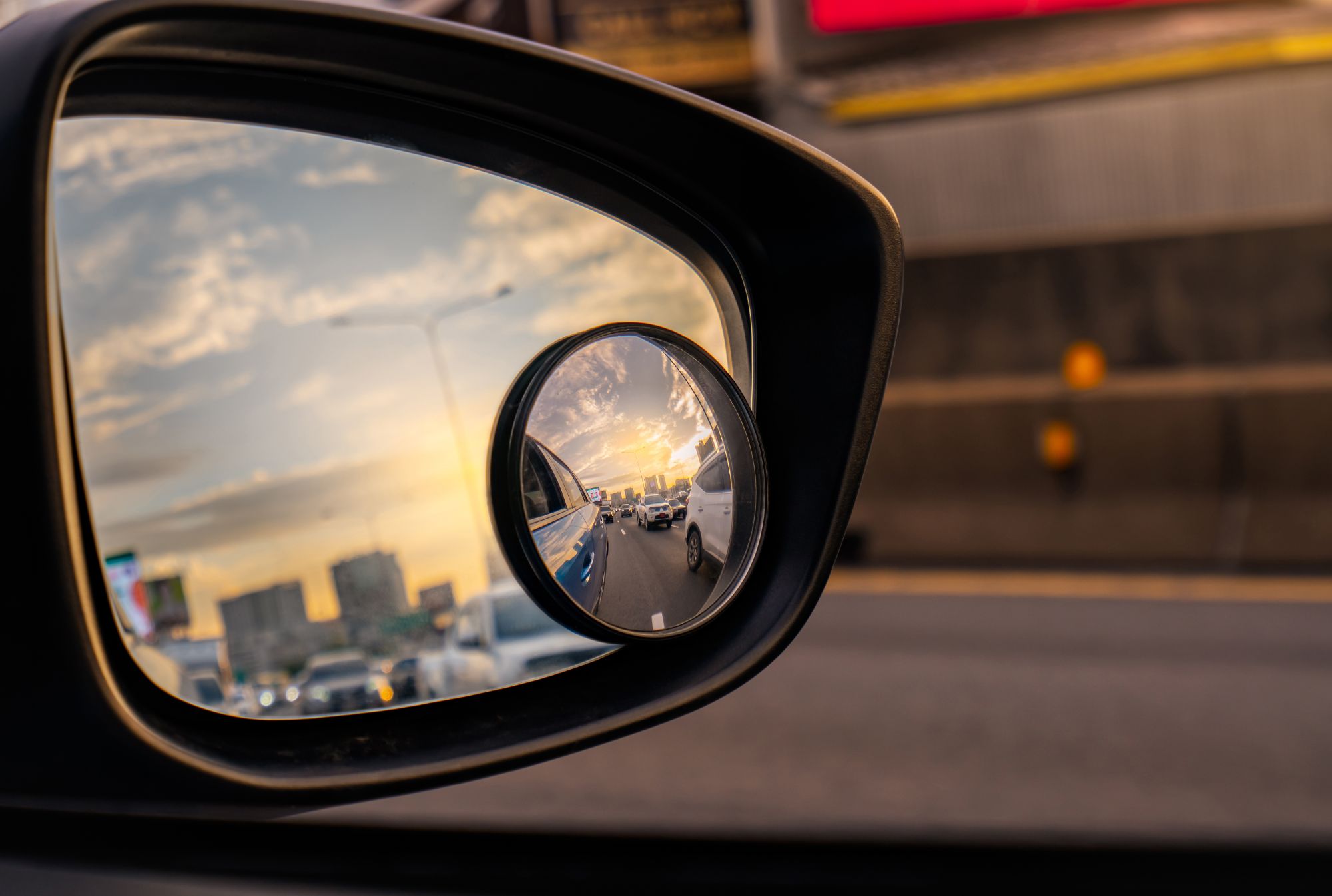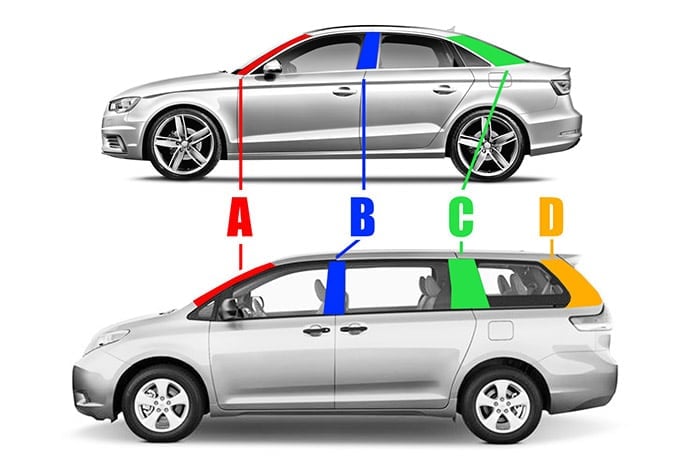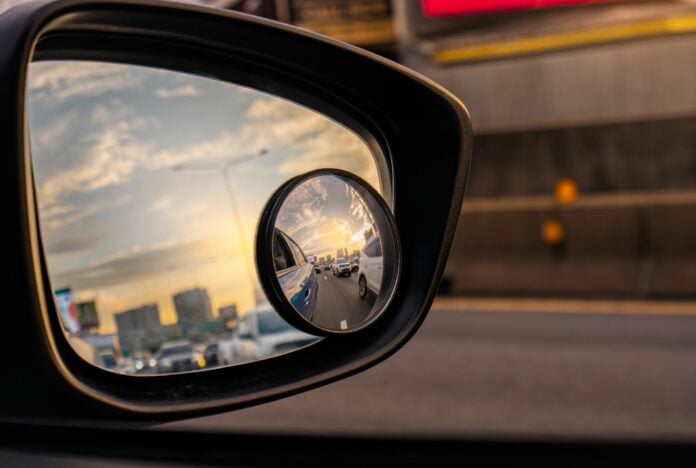With regards to blind spots while behind the wheel, it’s definitely not one of those times that out of sight equals out of mind. In fact, everything that’s hidden from your field of vision is all the more important as it could very well be something you end up colliding with.
What’s a Blind Spot?
You’ve probably heard the term before, likely in driving school. Your driving instructor would have mentioned it while you were being taught to adjust your side-view and rear-view mirrors.
On a side note, that’s also the primary reason your instructor would’ve taught you to always glance over your shoulders to ascertain your surroundings and not relying solely on the side-view mirrors.
Nonetheless, what exactly does it mean?
As the name suggests, a blind spot is an area of the car’s immediate surrounding that cannot be seen through the rear-view or side-view mirrors. Any car will have it, even the diminutive Perodua Axia.

The reason blind spots are so dangerous is that the area out of view can be large enough to hide another vehicle from your field of view.
Let’s delve into an example to better understand the immense risks without checking your blind spots on the road.
Say you’re stuck behind a slower car on the highway and haste needs to be made. You glance over to your right-view mirror and the coast appears clear. Cue hitting that indicator to signal your intended lane change to the right.
Just as you’ve turned the steering a little and your car’s begun transitioning into the lane on the right, you hear a horn blaring from that side.
It’s coming from a car on the right lane that’s had to get on the brakes to avoid you turning right into it and causing a collision.
You quickly yank the steering to bring your car back into your current lane before giving a timid wave of the hand to the driver to apologize whilst wondering where on earth that car popped out from.
That car wasn’t conjured out from the shadow realm, it was in your blind spot that was obscured from that quick glance into the side-view mirror.
Read More: Proper & Safe Driving Attire
Where Are the Blind Spots in a Car?
Most cars have at least two main blind spots. They are the area behind your side-view mirrors and next to both your front and rear doors on each side of the car.
Additionally, the design of the vehicle can also create blind spots depending on the placement and thickness of the pillars. After all, if function dictated all car designs, it’ll make for some pretty mundane form.
In most cars, the usual culprit are the A-pillars. The A-pillar is the upright pillar between the sides of the windscreen and the upper-front of the front doors that arches up into the roof. Depending on the design, the pillars could create a blind spot towards the sides of the fenders that prevents you from seeing oncoming cars or pedestrians as you exit a junction.
In larger SUVs, the C- and even D-pillars (usually on SUVs with a third row) can be rather wide, further contributing to the two primary blind spots mentioned above. Let’s not even go into panel vans that further reduce the field of vision from their rear-view mirror.

Image source: Edmunds.com
When Should I Check My Blind Spots?
At the very same time your driving instructor introduced you to blind spots, he or she most likely drilled into you the habit of checking said blind spots each and every time prior to making a lane change or a turn.
For instance, before making a lane change you should glance into your rear- and side-view mirrors but your instructor would have taught you to also take a quick glance over your shoulder towards the side you’re transitioning to. This move may help you pick out other cars, motorcycles, or even pedestrians depending on the situation.
Read More: Keep Yourself Safe With These Items From Car Accessory Stores
Is There a Way to Eliminate or Reduce Blind Spots?
Human evolution hasn’t yet reached the stage of growing eyes on the back of our heads but there are ways to narrow the width of those blind spots.
There are now methods to adjust the side-view mirrors to reduce or even completely eliminate these spots. Here are the steps towards achieving that:
- It starts with the rear-view mirror. Do not attempt anything different with this. As the name suggests, this mirror’s sole purpose is to give you a view of the rear. Once you’ve adjusted yourself into the optimal seating position, move the mirror to give you the best and most direct view straight out the rear windshield. Don’t attempt to tilt it towards the side to try and compensate for a view of traffic on either side of your car. That’s the purpose of the side-view mirrors.
- Now, lean your head until it just touches the driver’s side window. Then, adjust the mirror on that side until you can barely see the side of your car and nothing more. Do not push the mirror any wider until you cannot see the side of the car.
- Repeat the same process for the other side by leaning your head towards the middle of the car and adjusting the mirror on the opposite side until you can just barely see the left side of your car. Once you’ve done this and straightened your head, you shouldn’t be able to see the sides of your car. Do not panic! This is intentional as it gives you a much wider field of view.
- Your side-view mirrors are now positioned optimally to reduce and almost eliminate the two primary blind spots on each side. The final step is to ensure the effectiveness of the adjustments. As you’re driving on a four-lane road or highway, keep to the rightmost lane and note any vehicle in the left lane approaching you to pass. Without tilting your head to either side, glance in the rear-view mirror and track the car as it gains on your left side. As it disappears from your rear-view mirror, glance to the left side-view mirror and you should be able to clearly see the car. Lastly, as it disappears from the side-view mirror, it should appear in your peripheral vision. The result is you’ve successfully eliminated the blind spot on your sides as you’ve been able to keep track of the car without turning over your shoulder. Try the same thing with the other side and make slight adjustments if you notice a blind spot for even a split second.
Read More: Top Holiday Destinations for a Budget Vacation in Malaysia

Is There Anything Else I Can Do to Reduce Blind Spots?
More and more modern vehicles are being equipped with BLIS (BLind spot Information System); first introduced by Volvo. The system uses a camera or sensor located under the housing of the side-view mirror to detect a vehicle in the blind spot and alert the driver by illuminating a warning light on the tip of the side-view mirror or on the inside of the car right by the mirror.
Optionally, there are plenty of aftermarket solutions that utilize a convex blind spot mirror stuck on the edge of your side-view mirror. These curved mirrors give you a wider field of view that covers the blind spot.
Conclusion
To be a safe driver, your situational awareness needs to be at its highest level and one of the key components to that means being aware of the vehicles and space around your car while driving.
Eliminating your blind spots will create a wider field of view behind the wheel in case any emergency maneuvers are required.
Therefore, it is paramount that you take some time to discover the blind spots in your usual driving position and learn to reduce or eliminate them by adjusting your mirrors according to the method recommended.
It might be a small step but it will play a huge role in making you a much safer driver on the road.
